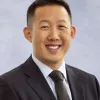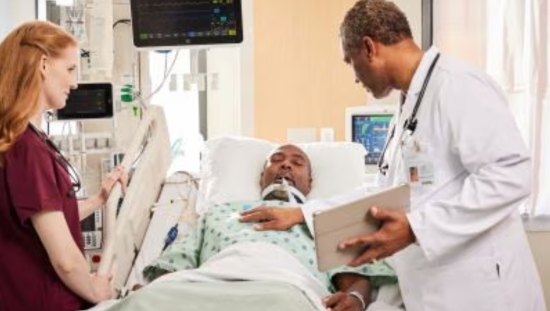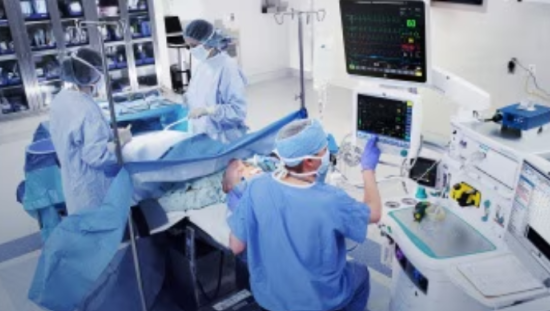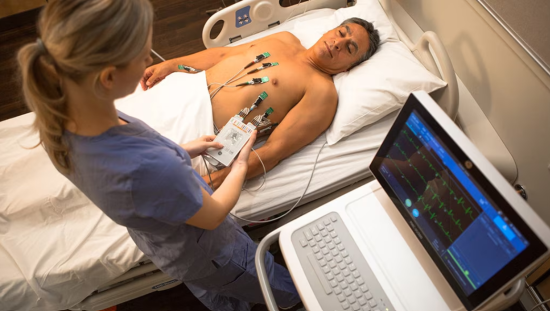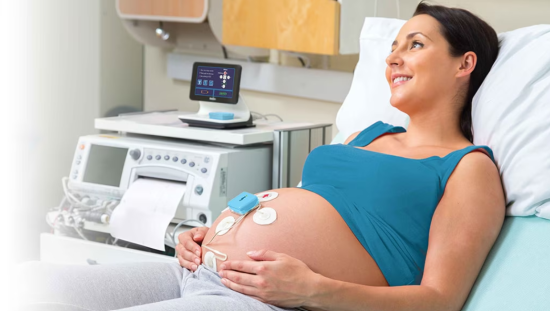Advancing Pediatric and Neonatal Anesthesia Care Podcast
A conversation with Dr. Jonathan Tan and Dr. John “JW” Beard on innovations, challenges, and best practices shaping the future of care for our youngest patients.
Show Notes
Transcript
Speakers
A conversation with Dr. Jonathan Tan and Dr. John “JW” Beard on innovations, challenges, and best practices shaping the future of care for our youngest patients.
Disclaimer: Nothing in this material should be used to diagnose or treat any disease or condition. Listeners must consult a healthcare professional.
GE is a trademark of General Electric Company used under trademark license.
JB35242XX, JB35243XX
Insights, interviews, and best practices by clinicians for clinicians. Welcome to GE HealthCare's Clinical View Podcast.
Dr. John “JW” Beard: Hello and welcome to the GE HealthCare's Clinical View Podcast episode. My name is JW Beard. I'm the chief medical officer and an anesthesiologist in GE HealthCare.
And today we're diving into one of the most critical and complex areas of modern healthcare, neonatal and infant anesthesia. These are our smallest, youngest, and most vulnerable patients and the stakes couldn't be higher. Joining me today is Dr. Jonathan Tan, a nationally recognized expert in pediatric anesthesiology and the author of a compelling new piece on optimizing care for neonates and infants, which you can find published on GE HealthCare's Clinical View website, which is a resource for clinicians by clinicians. And John, I'm just gonna take a moment here and read off your bio, which is really impressive piece of work you've done. Dr. Jonathan Tan's a pediatric anesthesiologist, clinical informaticist, and leader in health systems innovation. He serves as division chief of general anesthesiology and the endowed chair of pediatric anesthesiology at the Children's Hospital of Philadelphia and is an associate professor at the University of Pennsylvania.
He most recently served as vice chair of analytics and clinical effectiveness at Children's Hospital Los Angeles. Dr. Tan has published and been invited to speak nationally and internationally on emerging technologies, including artificial intelligence and nerve role and advancing patient safety. His expertise centers on improving patient safety and quality through the successful adoption and integration of new technologies.
Nationally, he serves on the board of the Society for Pediatric Anesthesiology and also holds leadership roles with the Anesthesia Patient Safety Foundation, the Society for Technology and Anesthesia, and as an editor for Perioperative Medicine. John, thank you for joining this discussion today. It's a pleasure having you.
Dr. Jonathan Tan: Thank you, JW. It's great to see you and thanks for the invitation to be on this podcast. Glad to be here.
Dr. John “JW” Beard: So first of all, John, congratulations on the new role at Children's Hospital of Philadelphia. You spent some time on the West Coast, but tell me a little bit about what it's like to go back to the Philadelphia area.
Dr. Jonathan Tan: Yeah, it's been wonderful. Yeah, super excited to start with a wonderful team at Children's Hospital of Philadelphia. Really incredibly grateful for the opportunity, just in general in my career, to have been at four of the, some of the best children's hospitals in the United States.
Really enjoyed my time and the team at the Children's Hospital of Los Angeles. But I'm taking with me a lot of really great lessons learned from a department standpoint, from an anesthesiology standpoint, but also as an enterprise level when I was back in Los Angeles with how we think about bringing in emerging technologies, including artificial intelligence, into the healthcare space. So I'm really looking forward to be able to bring that to a more operational capacity here in Philadelphia.
So super excited to be back in the city, and I think it's gonna be a great time with our team ahead.
Dr. John “JW” Beard: Yeah, I agree, I agree. You know, your interest in informatics and advanced technologies brings those technologies closer to your specialization, which is in pediatric anesthesiology. And thinking about the piece that you wrote for Clinical View, it really does highlight the unique risks that these populations have.
And I can just tell you, John, I was adult anesthesiology the whole way. My wife's a pediatrician, she was peds the whole way, but I was adult anesthesiology the whole way because children are complex. They can be more fragile when they have various illnesses.
So tell me a little bit about the risk profile and the unique elements of caring for children in the perioperative environment.
Dr. Jonathan Tan: Yeah, pediatric anesthesiology is awesome. I mean, all of our specialties really are. Pediatric anesthesiology is quite unique.
The kids are smaller and the families are certainly involved in the care. And I'd also add that some of the differences include the diseases are different. When you have a heart disease kind of adult patients, there's maybe more similarities in how that disease has progressed and adopted over time over a life course of an adult.
For a child, there's so much heterogeneity or differences with just how kids develop and all the things that could go wrong with child development in utero and after birth. And so for a pediatric anesthesiologist and also other clinicians that take care of young critically ill children, the real challenges come from the fact that there's a lower volume of patients. There's more mix and I would say variation in disease process.
And also the science is less developed. There's just less people working on it. There's less funding for research and there's less development.
Even for medical devices, there's a lag between the development for pediatric and neonatal specific devices versus the adult side. So all of it makes it for a really unique environment.
Dr. John “JW” Beard: Yeah, and I think just the level of specialization required to care for children of these ages with various disease states is really pretty impressive. So maybe you can just tell me a little bit about the landscape of the clinicians who are caring for children undergoing anesthetics. What's the road to specialization?
And then when someone becomes a specialist in this area, typically what are their patient profiles compared to someone like myself, who's primarily adults but would occasionally care for children? How do we kind of manage the care of the entire population?
Dr. Jonathan Tan: So the training pathway, to start off, after someone finishes their anesthesiology residency, there's an option to go after a pediatric anesthesiology fellowship. It's a one-year. There's some programs that are two years, but it's a one-year ACGME-approved pediatric anesthesia fellowship.
And then from there, you can be done and go on to practice as a pediatric anesthesiologist and as a board certification process that's been out for about a decade now. And then you can have the option, of course, to also pursue more advanced training in pediatric cardiac anesthesia. It's a second-year fellowship.
There's also some specialty work around regional anesthesia and pain medicine for children as well. That would be a secondary, more advanced fellowship. But by and large, most would finish a pediatric anesthesiology fellowship and go on to the world to take care of children, neonates, young children, big children, even adults.
I would say the spectrum is varied. There are pediatric anesthesiologists that are caring for kids that are still in utero with fetal anesthesia and fetal surgery. And then, of course, I've cared for 40 and 50-year-olds at a children's hospital that have unique congenital diseases.
So it's a huge spectrum, which is really exciting, but also highlights some of the challenges in our field.
Dr. John “JW” Beard: Yeah, I can certainly see the benefits of a pediatric anesthesiologist caring for perhaps an adult who's had repaired congenital heart disease or some sort of really unique physiology that may fall more into the area of expertise of someone with pediatric anesthesiology training. So when you have a pediatric patient, infant neonates would be the highest risk or the smallest group. Tell me a little bit about the age-associated definitions of these various populations and then the needs clinically to manage the anesthetic.
Like what level of personalization precision needs to go into that anesthetic to optimize the outcome for that child?
Dr. Jonathan Tan: Classically, pediatric anesthesia would be broken down by age categories. And normally, when we talk about neonates, for example, that's usually between zero to 30 days of age after birth. And then infants, anybody really less than one year of age.
And then young children I'd classify as two, three, four, five years old. And of course we have kids after that or children, and then kind of adolescent age and beyond. But really that focus on the neonatal population and the infants and very young children, that's the highest risk category in general for our specialty.
Those kids have much higher risk of perioperative adverse events, including cardiac arrest, whether they're otherwise healthy, or certainly if they're really sick with congenital heart disease, their risks of having a perioperative cardiac arrest, for example, is extraordinarily high compared to more healthy adolescents and adults. And that's really the framework there. And so within that category of neonates and young infants, that really high risk population, the need for personalization and precision delivery of anesthesiology and perioperative medicine is paramount.
That's the population that's at highest risk and every opportunity that we can get to optimize their planning pre-procedurally, the intraoperative care and adopting new technologies to help us with that precision and personalization really goes a long way at reducing risk. We'll take every advantage that we can get when we take care of these kids.
Dr. John “JW” Beard: Tell me a little bit about infants and neonates and their response to a general anesthetic. So we do have, there are technologies available that can help assess the depth of an anesthetic. There's responses to anesthetic opioids, et cetera, on the respiratory center and a patient's kind of respiratory physiology post-op.
So maybe tell us a little bit about how you would kind of manage your depth of anesthetic and then what you would look for post-operatively in some of these groups.
Dr. Jonathan Tan: Yeah, managing the depth of anesthesia for young children is incredibly challenging. And I think that's challenging across our field, but it's certainly challenging in this young population. I think there's a few reasons for that.
The first is that there's two types of kids. There's kids that had anesthesia before you receive them, never before. And there's others that have had congenital heart surgery and associated diseases that have acquired anesthesia over 10, 15, 20 times over the first year of life.
And so certainly those are different populations with different exposures to general anesthetics, volatile anesthetics, IV anesthetics, and opioids, for example. So just considering the fact that there are major differences in populations based on which child is in front of you is a key factor. And when it comes to thinking about depth of anesthesia as well, really great science has come out in the last few years just showing us using intraoperative EEG and brainwave monitoring that sometimes our intuition, our clinical intuition regarding these populations could be quite off.
You know, really well studied, really great publication that came out a few years ago that was in anesthesiology, really highlighted that many, many of our kids that are otherwise healthy undergoing healthy bread and butter urology procedures when they had an EEG attached to them and the anesthesia team was blinded to the EEG results, you know, over half of these kids were either in isoelectric or burst suppression on EEG. That's providing too much anesthesia from the time of induction through incision. And so that was one of the earliest papers that really just demonstrated we have to do a better job with how we are dosing our children.
We have to have that right balance between the depth of anesthesia that's appropriate for the phase of care. And so there's a huge opportunity for technologies like EEG to help support our depth of anesthesia management, which is challenging. Yeah.
Dr. John “JW” Beard: Talk a little bit, John, about what is the clinical significance of burst suppression or an isoelectric EEG? Like, what does that potentially mean for the recovery?
Dr. Jonathan Tan: Yeah. There's multiple impacts of having isoelectric or burst suppression or too deep anesthesia for children. You know, the first that comes to mind, certainly that we might all see in recovery is a prolonged recovery.
It's a longer phase of recovery, takes up more healthcare resources. It's concerning to parents too, right? When a child is sleeping longer than we want or think, parents want that instant gratification and deserve that kind of, that feedback for having a healthy, happy child that's recovered from anesthesia back in their arms.
I think we all want that for the family members. So that's a key aspect of having the right depth of anesthesia. And of course, there's a lot of questions about depth of anesthesia being too deep and what that might mean for neurotoxicity and brain development long-term.
I think there's still a lot of work that has to be done there but certainly if we're really pragmatic in how we approach taking care of all of our patients, having the right depth of anesthesia, the right amount of anesthesia given, it's probably the best thing for all of our patients long-term, especially the developing brain.
Dr. John “JW” Beard: Yeah, really important points. Kind of mixed in there with my EEG question. I did throw in a question about the respiratory physiology of children.
So I think I want to expand on that a little bit. So my question was a little more aimed at what should be, like what's the biggest concern in the postoperative period in how children differ from adults in their response to opioids, anesthetics, et cetera. So that's one of them.
But maybe also just tell us a little bit about the physiology, because I remember one of the things that made me uncomfortable was how quickly children can desaturate during an apneic period under care. So talk about the respiratory system a little bit, please.
Dr. Jonathan Tan: Yeah, thanks, JW. Yeah, children, especially the youngest children, are incredibly sensitive to our anesthetics and certainly are incredibly sensitive to respiratory risks. In fact, for the healthiest children, the most important and most common adverse event perioperally are respiratory events, adverse respiratory events.
And so youngest kids are really sensitive to apnea. They have less oxygen reserve. They use more oxygen for metabolism.
So on both ends of the supply and demand curve for O2, they will go down faster. And we're always teaching, you never turn your back on a baby that's under anesthesia or that's emerging. Things can happen really fast.
The minute you turn around, they could be blue. And so the speed to rescue or speed to identify the situation and speed to rescue is incredibly important. And so we always are teaching and encouraging vigilance from the person, but also ensuring that we have the right monitors on our patients at all times.
Respiratory adverse events are a real serious issue for children and the most common triggering event for cardiac arrest in healthy kids.
Dr. John “JW” Beard: Yeah, really important physiologic distinctions and yeah, never turn your back. A very important point. A couple of things you've mentioned here, there's kind of potentially less room for error with kids, not as much time for abnormalities in the ventilation, oxygenation of a child.
Children are also in some instances, as you mentioned, getting multiple anesthetics over the course of time at a very young age. If that's involved in imaging, if some of those are done in imaging, there's other areas too, what could be in the NORA environment. And I know you were a leader at a recent Anesthesia Patient Safety Foundation technology focused Stolting Conference, which was a great conference.
The conference the year before was on NORA. And so these kids are going into NORA environments and have risk of complications, et cetera. You talk a little bit about how a NORA environment is managed within a pediatric facility, a place that's really capable of providing this type of care.
Dr. Jonathan Tan: Yeah, the NORA environment for children is a really special one. Similar to maybe the adult population, NORA is offsite. It's away from the concentration of where all the staff members and anesthesiology team members might be.
So there are all the standard risks with NORA, for example, from a structural standpoint. But NORA is a little bit different in pediatrics. Actually, it's surprising to a lot of individuals and people out there that NORA accounts for 40 to 50, in some places, 60% of a clinical practice for pediatric anesthesiologists.
Unlike adults, young children don't hold still for a five minute CAT scan. They don't hold still certainly for a 30 minute, one hour MRI. And so all these children for non-painful procedures, non-invasive procedures as well, certainly require some level of deep sedation or general anesthetic.
And so one of the key differences is the amount of volume could be up to half of our practice. So that's an area of a pediatric healthcare system that we invest a lot of resources, time, and even personnel to. When you're in a remote location in the NORA situation and NORA case volume types, we really make sure that we're staffed appropriately there.
And we spend a lot of time training the nurses and kind of the team in the NORA locations to understand general anesthesia. So it's a much different training environment for our staff around us than maybe the PACU or traditional operating room environment. So NORA can be risky.
And so we spend a lot of time focusing on that for our youngest kids.
Dr. John “JW” Beard: And what are some of the practical steps in the NORA environment just to make it, reduce variability, staff is rotating through. Occasionally people have not worked with each other. They may be unfamiliar with the physical layout.
I mean, there's a ton of potential challenges there.
Dr. Jonathan Tan: There are a ton of challenges and we take very intentional steps. Some of the steps that we do take is standardizing equipment everything in the NORA location, from our carts to access to airway equipment, tubes, all those things, airway devices are exactly the same. So our carts look exactly the same.
This is a move that many pediatric healthcare systems have undergone over the last 10 years or so in the NORA environment to help facilitate more stable practice in the offsite location. Of course, we have access to all the standard emergency medications and things like that. But also from a staffing standpoint, it's true.
We actually have a focus team that spends more time in NORA than other places, especially in nuanced environments. And then when we're onboarding new staff, whether you're a nurse anesthetist, an AA or a physician colleague, we will double you up and you'll have a transition time in the NORA environment. So you will really understand the risks and the environment and ability to rescue in these places.
John, the NORA environment can be incredibly unique especially in kids. One of our really specialized areas of care in NORA is photon and proton therapy. It's kids getting radiation therapy.
And for many of these kids, they receive general anesthesia Monday through Friday, every day of the week for up to six weeks. And in many of these situations, depending on location, they need to have the same body position, same head position so that the proton or photon therapy machine can single in and really do their most precise work. So that means providing the same anesthetic, the same airway management, whether it's a tube or an LMA or just natural airway, same position for the child consistently every day for six weeks.
Also recognizing while these kids are NPO every day, Monday through Friday, anticipation for their procedure. And so everything we can do to have precision healthcare delivered for these kids, including a fast recovery so they can go back to eating, not fasting is really critical. So just to highlight, that's a really nuanced part of NORA for pediatric anesthesiology.
Dr. John “JW” Beard: Yeah, that is a really compelling example of both the specialization and the importance of how that anesthetic is managed. So if a child's receiving these anesthetics for days or consecutive weeks, essentially, periods of prolonged nausea, vomiting, delirium, whatever it could be, if that begins to interrupt patient's caloric intake, just kind of their day-to-day development, that could have some pretty significant long-term consequences. So John, so you highlighted the importance of being able to repeat this day-to-day for those kids, and that's reducing variability, best practice.
I can see how that's important. There's also gonna be really unexpected events. A way that our specialty handles, and other specialties too, can handle the unexpected is through simulation.
I guess both complexity can be trained for with simulation and also the unexpected. What's been your experience with simulation and what do you think it's optimal role is in a medical center caring for complex patients?
Dr. Jonathan Tan: Simulation is key. It's one of the best tools that we have in our specialty to ensure that we are ready. As you know, John, most of the care we provide, adverse events are still rare, which is a really wonderful part of our specialty.
But when they do happen, they are high stakes and potentially catastrophic. And so simulation provides such a wonderful opportunity for us to practice honing our skill for what is otherwise low probability, high stakes events. I think the real benefit of simulation, though, comes especially in pediatric anesthesiology and in the neuro-environment especially, is in making sure that our simulation is multidisciplinary.
And outside of just anesthesiologists, CRNAs and AAs practicing together, bringing in our anesthesiology techs, our nurses that work in the environment, our surgeons or interventional radiologists, for example. So bringing those individuals to the table, to the simulation lab, and practicing these high-risk scenarios together is huge. And that's an area that needs a lot of focus on, obviously a lot of resources, but I think that's where we're gonna see our biggest gains in safety and quality from a simulation perspective.
Dr. John “JW” Beard: You know, the simulations that I have personally done, I was pretty uncomfortable going into the simulations. Like in our cases, we were being video recorded. We were debriefing afterwards.
But when I, with the right environment and the opportunity to learn, those experiences were invaluable. Like it is as real as possible, and it's the caring for the uncommon situations in fairly stressful simulated environment is a great, it's a great practice.
Dr. Jonathan Tan: Yeah, it's a great practice. And, you know, the field of medical simulation has advanced so much, and anesthesiologists have really, you know, taken the lead with that across the country. There are fellowships now, and advanced training in medical simulation.
And I think to what you're sharing, it really speaks to this real expertise that's needed to help guide a realistic simulation and a real life simulation, but also that debrief part where, you know, medical professionals can feel comfortable with the debrief as well, which is really key as part of the learning process. So it's been really wonderful to watch this anesthesiologist take the lead in medical simulation, and how that field is, and specialty itself has grown over the last decade.
Dr. John “JW” Beard: In New England Journal, I think it was either this week or the previous issue, there was a piece written by a group of medical students, and I don't remember which university they're training, but it was their interaction using AI during patient care. So they were, and this is, I started thinking about this because we're talking about simulation. One of the traditional ways of simulation is the model patient.
So it's someone who comes in and they simulate a disease state, and they can help train those clinicians to do histories, physical exams, et cetera. So the medical students were talking about their experience using AI. So they would go into the room with these model patients, ambient AI, large language model transcription would take place and generate a note, and the med students would change, it would generate a note.
So that's one example of AI kind of being utilized in healthcare. With your background, John, both in advanced technologies, including AI, informatics, et cetera, where do you see the greatest opportunities for these technologies to support clinicians in delivering care in the future?
Dr. Jonathan Tan: Yeah, there's a lot of exciting technology out there, and it's fast, it's fast moving. It's a part of all of our life now outside of medicine, of course, and inside of medicine. You know, the biggest gains are gonna come from solving real world problems for all of us in the clinical space, and also kind of the administrative space around our practice.
You know, everyone always mentions AI as artificial intelligence as a proper name, but AI also stands for augmented intelligence. And I think the real value in technologies like artificial intelligence or AI is gonna be in augmenting our abilities as healthcare professionals in our workspaces. And so that's where we really have to spend the effort.
We really have to find a way to invest in these technologies, but also thoughtfully adopt them into our workflows and clinical practices. There's a lot of thoughts around that, but augmenting our abilities is how this technology should really be impacting us.
Dr. John “JW” Beard: Yeah, I mean, I think there's lots of great examples in the literature, but if it's technology that helps us arrive to the proper diagnosis more quickly, or we optimize that therapy more quickly, there's gonna be enormous potential benefits. There's certainly risk associated with the introduction of new technologies as well, but I agree that there's a lot of promise. So I wanna just take a quick step back here just about technologies that are a little more like in the here and now, but they're relatively new.
So in children, we talked about respiratory complications being a prime consideration. So relatively new technologies used in management of all patients, including pediatrics, are video laryngoscopy and high-flow nasal cannula, or high-flow nasal oxygen. What role have those had in pediatric anesthesiology?
Dr. Jonathan Tan: Yeah, those two technologies have been amazing. So we'll start with video laryngoscopy. And so over the last decade, we've seen research, not just emerge, but mature, and beyond maturing, being adopted into clinical practice.
In fact, at some point, I would anticipate next few years, these become quality metrics. So the use of video laryngoscopy in very young children, infants, and one paper actually talks about in children less than seven kilos in weight, has been shown to reduce the number of attempts of intubation. And I think that makes sense to a lot of us anesthesiologists.
But when you take it a step further and say that, wow, the number of attempts has been associated very directly with the number of not just adverse events from a respiratory standpoint, but actually in cardiac arrest, now there's a story that's emerged that any attempts, anything we can do to reduce number of attempts at intubation reduces adverse events and reduces cardiac arrest in very young children. And so video laryngoscopy has been shown in multi-center studies internationally and locally to reduce number of attempts. And so there's been a big push to adopt video laryngoscopy, the equipment, so that they're available to all of us in the operating room and neurosetting.
And also to really encourage the teaching and utilization of video laryngoscopy. So you're seeing this just change in our practice since when I came out of training. And it's been really wonderful to see the safety margin improve because of technology.
The second is a high flow nasal cannula and just optimizing oxygenation. Really great study that came out a while ago, but now we're starting to see that technology kind of become more present in the operating room in clinical practices, delivering high flow to neonates and young infants. The studies have shown, and the clinical practice is very obvious in front of you.
If you attach one of these high flow oxygenation devices to children while you're putting them to sleep, their time at maintaining 100% SAT stays on for a long time. It's incredibly impressive, and it just improves that margin of error that you can have and the time that you need to intubate or to manage the airway in whatever plan you have in front of you. So VL, video laryngoscopy, and high flow oxygenation, just incredible technologies that we're seeing in our practice.
Dr. John “JW” Beard: Yeah, and when I talk about my role as a clinician in industry and my personal experience with technology, once I had video laryngoscopy available whenever I needed it, and then also point of care ultrasound for lines and blocks, I just, I'm more effective, I'm safer, I feel better going into work each day. Tell me about the use of ultrasonography in pediatric anesthesiology. For blocks, lines, whatever purposes.
Dr. Jonathan Tan: Yeah, ultrasound is our friend, we say, in the operating room. I think most of us are incredibly happy when there's an ultrasound parked right in the corner, ready for immediate use. Certainly ultrasound is used as standard of care for regional anesthesia in pediatric anesthesiology today.
That is for sure the standard of practice. And when it comes to other applications, certainly there's been vascular access. As we know that children can be really challenging with IV access and with also placement of central lines and arterial line catheters.
Ultrasound has been shown and in practice to reduce the number of attempts in that scenario as well. And we're seeing this transformation in practice also where everybody is using or learning how to use an ultrasound in neonates and young infants. And it's changing the game at how many folks we have.
And it's changing the game to also speed and operational efficiency. In fact, ultrasound for IV placement has become so good that the number of central lines that our trainees are getting during fellowship practice is actually quite low compared to 10, 15 years ago. Oh, really?
So, yeah. So it's much easier to put in a, it's more possible now to put an 18 gauge in in a three month old baby with an ultrasound on one attempt. And now you have this great access.
There's no need to put a central line in anymore. Yeah. Pretty phenomenal.
Dr. John “JW” Beard: That is phenomenal. So we've talked a bit about your practice. We've talked about the applications of technology and how that they can improve lives of clinicians, the outcomes for patients.
Tell me about the role of industry in supporting healthcare providers and supporting patients. You know, GE HealthCare, we really pride ourselves in innovation, providing high quality, innovative equipment that helps shape practice. What role does industry have in advancing the field?
Dr. Jonathan Tan: Industry is an essential partner. Industry has always been an essential and critical partner in advancing anesthesiology and pediatric anesthesiology. And I think that essential partnership and position only gets stronger as time goes on.
Our technologies are getting more advanced over time. Look at every device that we use, whether it's a monitor, an anesthesia delivery platform, our pumps, all the devices that we use, they're becoming more and more advanced. And it's going to be essential for healthcare systems, practices, and individuals to learn and partner from our industry leaders.
They're an essential partner to our field and it's really wonderful that GE HealthCare is focusing specifically on the pediatric anesthesia population.
Dr. John “JW” Beard: Yeah. Well, we are really very proud to partner with anesthesiologists like yourself, professional societies like ASA, ASAIC, APSF, and others to really be able to work with leaders, with clinicians on the front lines to try to improve patient care. So we very much appreciate the collaboration of the specialty with those of us who are developing and bringing technology to market.
So thank you, John. Looking ahead, what do you think, what's most exciting for you looking at the next 10 years? If we have another one of these, we should do another one of these discussions in 10 years and look back at our script today and see what's different, what's come to be, what has not met the expectations.
What do you think the greatest opportunities are? Tell me what it's going to be like in 10 years.
Dr. Jonathan Tan: Yeah, JW. It'd be fun to do this in 10 years and look back at what we talked about. I think the most exciting area of work for the next 10 years is the fact that our care is going to get better and better.
I have no question that the care, the quality, the safety of care that we deliver for our youngest and most critically ill children is going to get better. We're going to have better outcomes in the future, and I hope it's going to be easier. And I think the most exciting part about that is it's going to require partnership and collaboration.
We have the technology, we have the research, that work is always ongoing. And of course, there's always a need for more funding for research and more development of technology. But for the next 10 years, I think we really need to evaluate, do we have the right people in the room?
Do practices and healthcare systems have all the experts at the table? That includes not just clinical experts, but also engineers, scientists, data scientists, implementation science experts, and also industry partners. And we need to bring everybody to the table and work together to advance our specialty.
And I think that's super exciting, but it's an area of work that we're really going to have to invest into. We know everything we need to do to take care of our patients and advance our care. We have that information today.
We have many of the great technologies today, but we need to implement them into our workloads and practices. And I'm excited to do that because that's going to not just involve hardware and software, but it's going to involve people. And that's wonderful.
Dr. John “JW” Beard: Yeah. Well, we are certainly looking forward to being collaborative partners along this way. So we're coming to our close, John, and I'm going to ask you to try to get as specific as you can.
Could you give us, for our listeners, clinicians, healthcare leaders, parents, one key takeaway from today's conversation? Like what do you think would be the most important thing potentially for our listeners to take home?
Dr. Jonathan Tan: Yeah, I would say starting off with the reality. Healthcare is really hard today in this generation of healthcare. Delivering healthcare is really challenging for the healthcare professional.
I think we can all recognize that with workforce shortages, the economics, inflation, burnout. There are just so many active issues that are challenging to deliver healthcare. I think from a patient standpoint, and we're all patients as well, being a patient in today's healthcare system is incredibly challenging.
It's more complex than ever. It's hard to navigate at times. And sometimes we can all certainly feel frustration as we pursue what we want, which is excellent healthcare for ourselves and our loved ones.
But I think a key takeaway is this, there are a lot of people, experts, and partners that are working, that are not being discouraged by all of this, that are working to solve these problems from a technology standpoint, organizational standpoint, and a clinical delivery standpoint. Healthcare is going to get better. It's going to take all of us partnering together.
And I'm optimistic for the future, and I hope all our listeners are, and I hope they're encouraged by the amount of experts that are partnering together across our specialty to make life better for not just patients and their families, but also healthcare professionals and their families as well. So exciting times ahead. I think we should all be optimistic.
It's going to take a lot of hard work, but we're going to do this together.
Dr. John “JW” Beard: Very powerful. And I share your optimism. So I want to thank you again, John, for sharing your time with us today and sharing your expertise.
And I also want to thank our listeners for joining us on this important journey. Thank you for having me. And for our listeners who are interested in learning more, please go to GE HealthCare's Clinical View and find Dr. Tan's article, Optimizing Pediatric Anesthesia Care for Neonates and Infants, where Dr. Tan will cover many of these topics and also provide self-assessments where they can assess their own practices in context of the challenges and opportunities described by Dr. Tan in the article.
Thank you for listening to Clinical View Podcast, brought to you by GE HealthCare. Expand your view at clinicalview.gehealthcare.com.

Dr. Jonathan M. Tan, MD MPH MBI FASA
Jonathan M. Tan, MD, MPH, MBI is an Assistant Professor of Anesthesiology Critical Care Medicine at the Children’s Hospital Los Angeles and the Keck School of Medicine and of Spatial Sciences at the University of Southern California. In addition, Dr. Tan serves on the faculty of the USC’s Population, Health and Place Ph.D Program as part of the Spatial Sciences Institute. Dr. Tan is board certified in Anesthesiology, Pediatric Anesthesiology, Clinical Informatics, and Medical Quality.
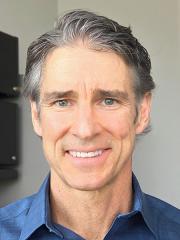
John "JW" Beard, MD, MBA
John “JW” Beard, MD, APSF board Member and Chief Medical Officer of GE HealthCare – Patient Care Solutions. Prior to entering the medical industry, Dr. Beard was in clinical practice for fifteen years as an anesthesiologist. While in clinical practice, Dr. Beard led multiple quality improvement initiatives and held leadership positions including Chairman and Medical Director of the Department of Anesthesia.

